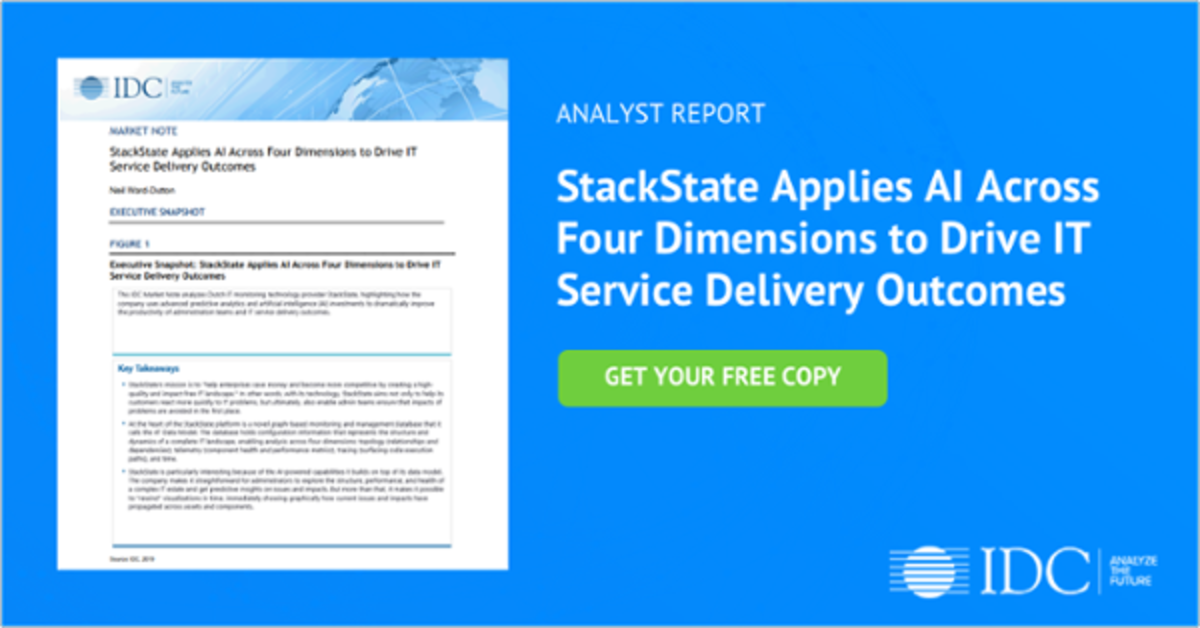Read the full analyst report here.
Increase productivity, without scaling resources
According to the IDC report, StackState is particularly interesting as an IT monitoring technology vendor because of the AI-powered capabilities it builds on top of its proprietary 4T Data Model. StackState makes it straightforward for administrators to explore the structure, performance, and health of a complex IT estate and get predictive insights into issues and impacts. But more than that, it makes it possible to "rewind" visualizations in time, immediately showing graphically how current issues and impacts have propagated across assets and components. With these capabilities, StackState gives administrators of such environments a productivity tool with major potential to improve outcomes.
Minimize costs and improve business service levels
The StackState platform is designed to do three things:
Drive visibility of an IT estate across all technologies (across traditional on-premise platforms, microservices environments, and multi-cloud environments);
Perform end-to-end monitoring of health and performance across a heterogeneous, widely distributed IT estate;
Provide intelligence for quick fault and performance issue diagnosis to minimize costs, improve business service levels, and enable innovation.
Tackle monitoring data silos
At the heart of the StackState platform is a novel graph-based monitoring and management database. The database holds configuration information that represents the structure and dynamics of a complete IT landscape, drawing on data pulled from any number of third-party monitoring and management tools and sources and providing an integrated "single pane of glass" view of that landscape. This view enables analysis across four dimensions: Topology (relationships and dependencies), Telemetry (component health and performance metrics), Tracing (surfacing code execution paths) and Time. This last dimension enables the users to "rewind" visualizations in time, immediately showing graphically how current issues and impacts have propagated across assets and components.
Learn how StackState tackles monitoring data silos.
Powered by Artificial Intelligence
StackState uses its four data dimensions to fuel AI and Machine Learning techniques. These techniques drive advanced analytics, that deliver three capabilities for the user today:
Anomaly detection. StackState estimates the parameters of "normal" deviation from current performance using unsupervised learning (based on observed patterns of past performance) and alerts users when performance strays outside of that envelope;
Problem clustering. StackState can automatically identify issues that are likely to be related in cause and cluster them together in the tool's UI, so administrators aren't deluged with cascades of individual alerts when problems occur;
Automatic root-cause and impact analysis. StackState uses graph-based inferencing (specifically, a technique called Loopy Impact Propagation) to reason about the impact that one component can have on others; it uses these inferences to propagate issues both into the future (enabling prediction of future impacts) and into the past (identifying the root causes of a problem).
IDC Research concludes that "StackState has significant potential to provide benefits to large organizations with complex IT estates, including managed service providers (MSPs) and large enterprises, by enabling administration teams to improve outcomes without scaling their resources accordingly".



